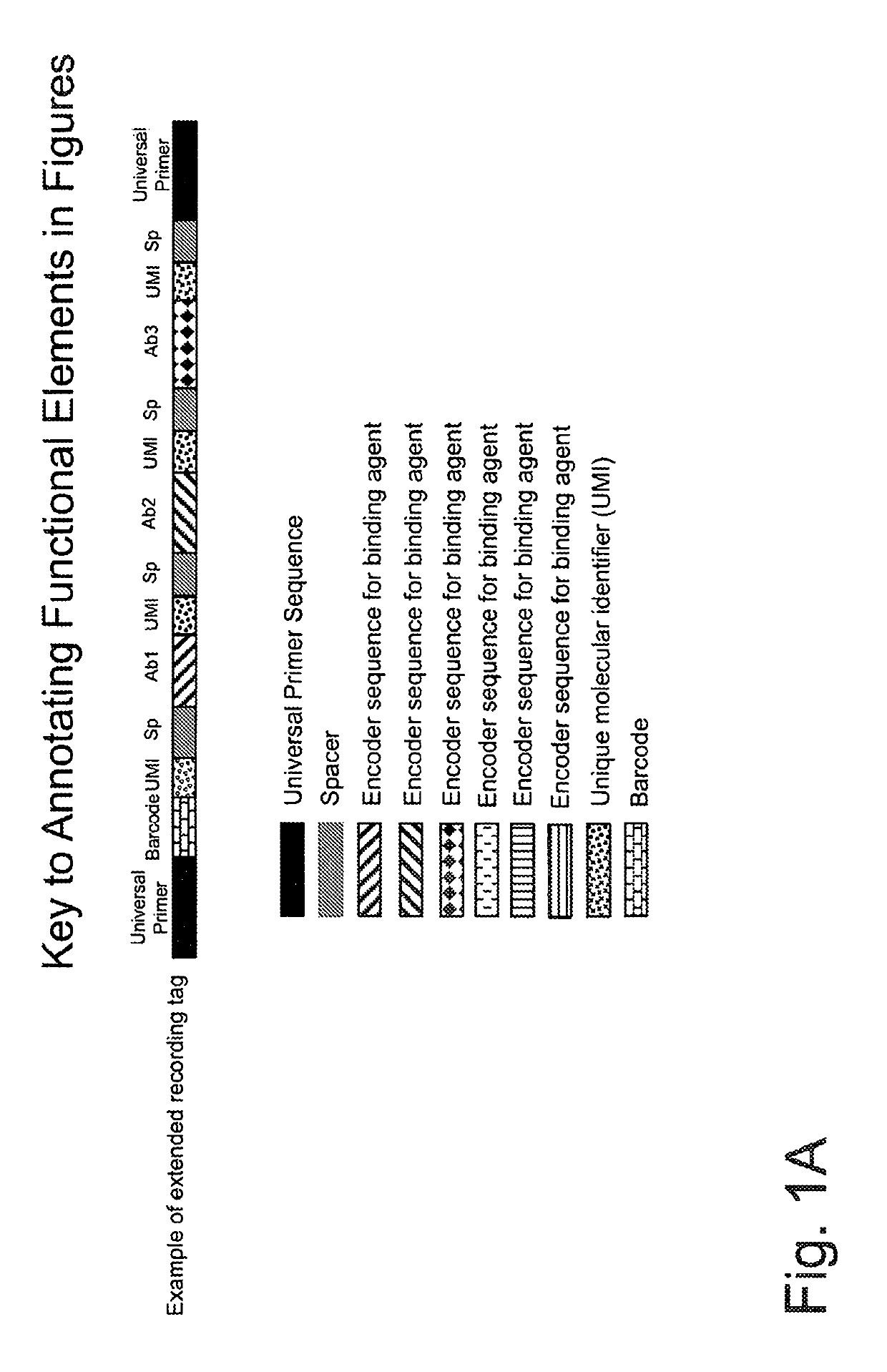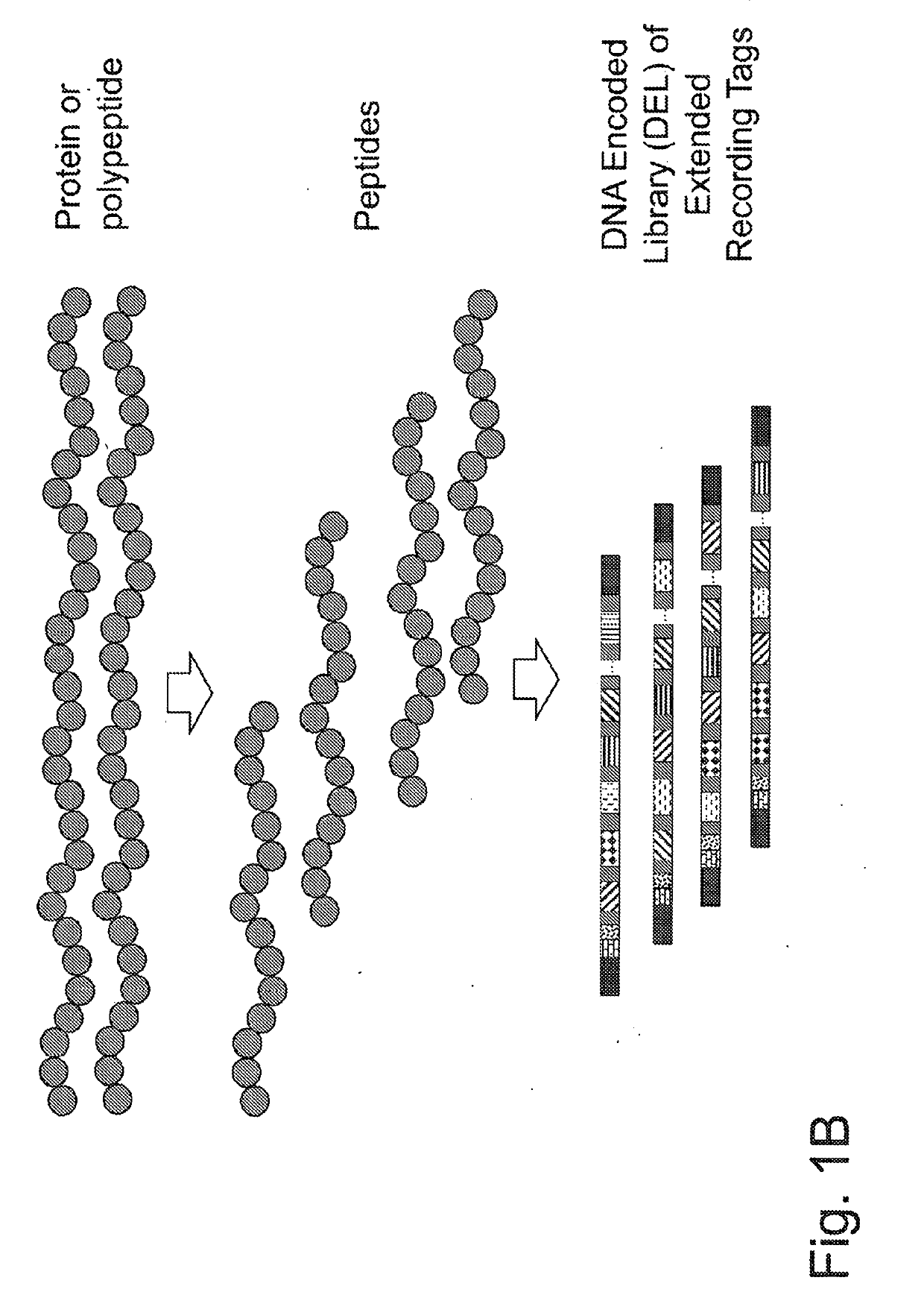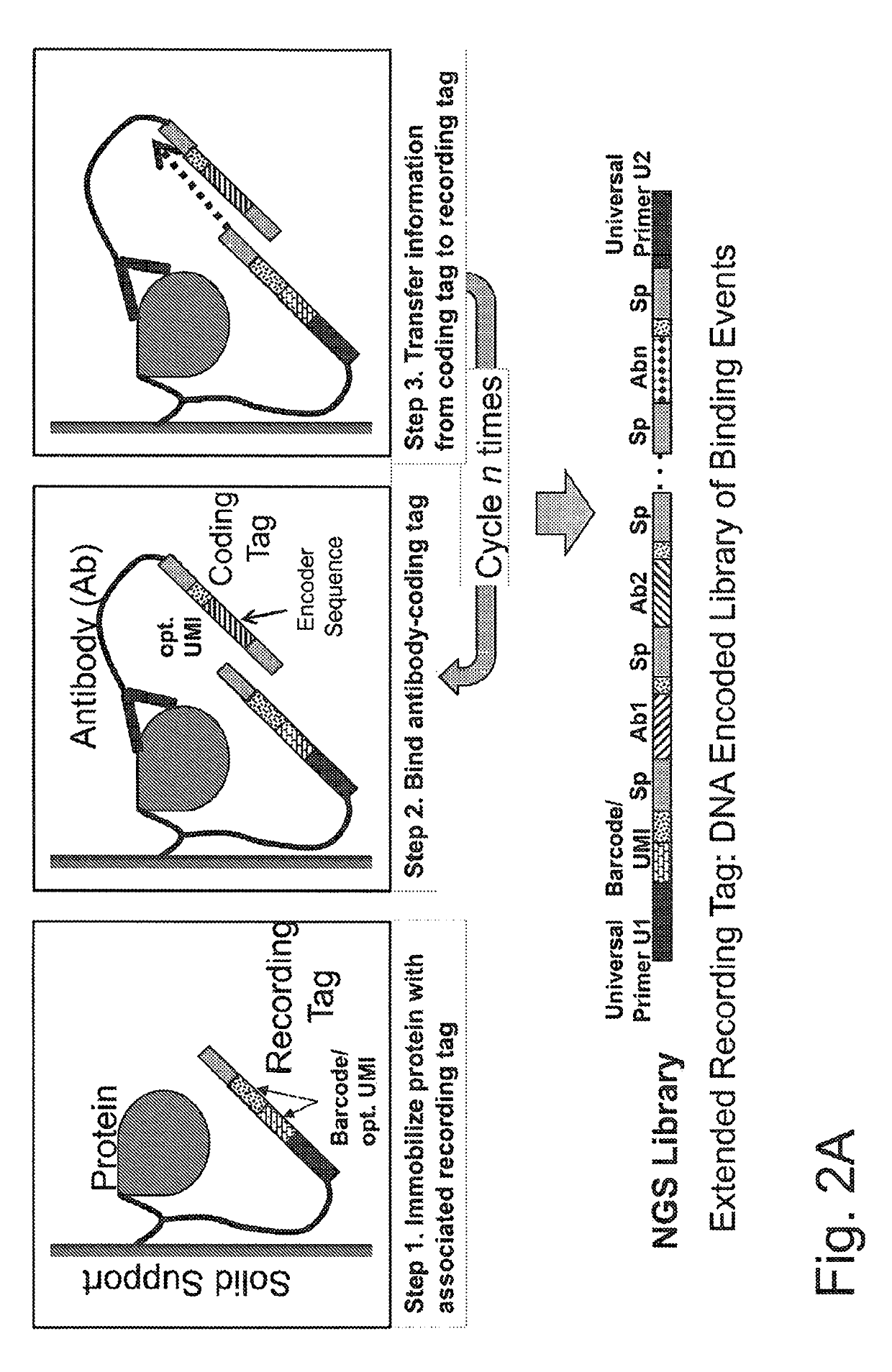Macromolecule analysis employing nucleic acid encoding
a nucleic acid encoding and macromolecule technology, applied in the field of macromolecule analysis, can solve the problems of complex structure, difficult to recognize proteins, and large amount of relevant information in proteins, and achieve the goal of achieving high-parallel macromolecular characterization and recognition
- Summary
- Abstract
- Description
- Claims
- Application Information
AI Technical Summary
Benefits of technology
Problems solved by technology
Method used
Image
Examples
example 1
of Protein Sample with Proteinase K
[0636]A library of peptides is prepared from a protein sample by digestion with a protease such as trypsin, Proteinase K, etc. Trypsin cleaves preferably at the C-terminal side of positively charged amino acids like lysine and arginine, whereas Proteinase K cleaves non-selectively across the protein. As such, Proteinase K digestions require careful titration using a preferred enzyme-to-polypeptide ratio to provide sufficient proteolysis to generate short peptides (˜30 amino acids), but not over-digest the sample. In general, a titration of the functional activity needs to be performed for a given Proteinase K lot. In this example, a protein sample is digested with proteinase K, for 1 h at 37° C. at a 1:10-1:100 (w / w) enzyme:protein ratio in 1×PBS / 1 mM EDTA / 0.5 mM CaCl2 / 0.5% SDS (pH 8.0). After incubation, PMSF is added to a 5 mM final concentration to inhibit further digestion.
[0637]The specific activity of Proteinase K can be measured by incubatin...
example 2
ep Using Sp3 on Bead Protease Digestion and Labeling
[0638]Proteins are extracted and denatured using an SP3 sample prep protocol as described by Hughes et al. (2014, Mol Syst Biol 10:757). After extraction, the protein mix (and beads) is solubilized in 50 mM borate buffer (pH 8.0) w / 1 mM EDTA supplemented with 0.02% SDS at 37° C. for 1 hr. After protein solubilization, disulfide bonds are reduced by adding DTT to a final concentration of 5 mM, and incubating the sample at 50° C. for 10 min. The cysteines are alkylated by addition of iodoacetamide to a final concentration of 10 mM and incubated in the dark at room temperature for 20 min. The reaction is diluted two-fold in 50 mM borate buffer, and Glu-C or Lys-C is added in a final proteinase:protein ratio of 1:50 (w / w). The sample is incubated at 37° C. o / n (˜16 hrs.) to complete digestion. After sample digestion as described by Hughes et al. (supra), the peptides are bound to the beads by adding 100% acetonitrile to a final concent...
example 3
of the Recording Tag to the Peptide
[0639]A DNA recording tag is coupled to a peptide in several ways (see, Aslam et al., 1998, Bioconjugation: Protein Coupling Techniques for the Biomedical Sciences, Macmillan Reference LTD; Hermanson G T, 1996, Bioconjugate Techniques, Academic Press Inc., 1996). In one approach, an oligonucleotide recording tag is constructed with a 5′ amine that couples to the C-terminus of the peptide using carbdiimide chemistry, and an internal strained alkyne, DBCO-dT (Glen Research, VA), that couples to azide beads using click chemistry. The recording tag is coupled to the peptide in solution using large molar excess of recording tag to drive the carbodiimide coupling to completion, and limit peptide-peptide coupling. Alternatively, the oligonucleotide is constructed with a 5′ strained alkyne (DBCO-dT), and is coupled to an azide-derivatized peptide (via azide-PEG-amine and carbodiimide coupling to C-terminus of peptide), and the coupled to aldehyde-reactive ...
PUM
 Login to View More
Login to View More Abstract
Description
Claims
Application Information
 Login to View More
Login to View More - R&D
- Intellectual Property
- Life Sciences
- Materials
- Tech Scout
- Unparalleled Data Quality
- Higher Quality Content
- 60% Fewer Hallucinations
Browse by: Latest US Patents, China's latest patents, Technical Efficacy Thesaurus, Application Domain, Technology Topic, Popular Technical Reports.
© 2025 PatSnap. All rights reserved.Legal|Privacy policy|Modern Slavery Act Transparency Statement|Sitemap|About US| Contact US: help@patsnap.com



